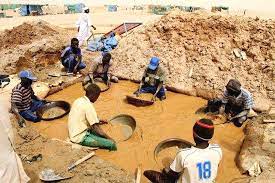Sierra Leone, today, bears little resemblance to the late 1990s when a civil war left the country’s infrastructure and economy decimated. It also left behind 14 main ethnic groups who did not trust each other and ensured that the country became one of the poorest in the world. Since 2001, the country has seen the peaceful transition of government after elections, and GDP growth annually north of 8% on average.
Most observers critique positively (and negatively) that President Ernest Bai Koroma governs the country like a small business. For a former insurance executive, he has theoretically done a lot to lower the risk perception of the country and boost foreign investment. Liberal trade policies and investor-friendly mineral laws continue to boost the country’s reputation on the investor landscape. Tax incentives, albeit criticized by some organizations, including the Tax Justice Network Africa, are currently very favorable to foreign investors. Additionally, while this West African coastal country only has a population of 6 million people, there are opportunities for investors. It also benefits from its close proximity to Liberia, Guinea and Cote d’Ivoire, and its membership in the larger Economic Community of West African States (ECOWAS).
Here’s a look at the top 3 sectors worth considering in Sierra Leone:
#1 Mining
Sierra Leone has large deposits of diamonds, gold, copper, nickel and iron ore, among others. Continued exploration efforts are required to assess commercial viability across the country and then to actually commercialize the minerals. Anxious trade partners, including China and India, are hungry for these mining exports as their economies continue to boom. The National Minerals Agency, established in 2012 following the 2009 Mines and Minerals Act, now certify gold and diamonds, collect and store all geological information (including mapping), and have launched a state-of-the-art mining cadaster system. The returns from this sector is also vital to the country’s foreign currency reserves and underpins the current funding to the next interesting sector.

#2 Infrastructure
This is the catch-all sector when discussing Sierra Leone. The government wants to boost rail construction, marine transport, and telecom among other sectors vital to the country’s everyday functioning. High fuel prices, relatively lower urbanization, and decrepit transport generally stalls business, particularly in the mining sector. Mobile penetration hovers between 50% and 55% which means there is still a way to go for the country. Tourism facilities, such as parks and entertainment facilities, could help boost GDP if the government can find a way to initiate mutual beneficial public private partnerships with investors. The same can be said for the affordable housing sub-sector and the water supply in the country.
#3 Energy
Sierra Leone needs to boost its power sector, especially to support the growing presence of mining companies. President Koroma has unrelentingly been pushing on the country’s massive electrification plan. He sacked his Minister of Energy Oluniyi Robbin-Coker and deputy Minister of Energy Dr. Martin Bash-Kamara in February because, according to insiders, they were not driving the electrification process and overall implementation of energy projects at a pace satisfactory to president. Most investors were not too startled by these sackings as they also recognize that the National Power Authority lacks the human capital and capacity to do everything the President Koroma imagines. He has accordingly has been open to foreign investors entering the energy sector, especially in the development of renewable energy. But it should be noted that the attractiveness of the sector will only hit full force once the government passes laws to bump up tariffs to reflect cost of production.
